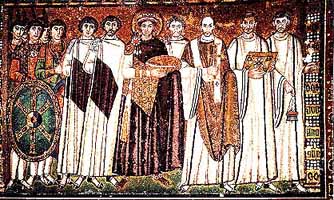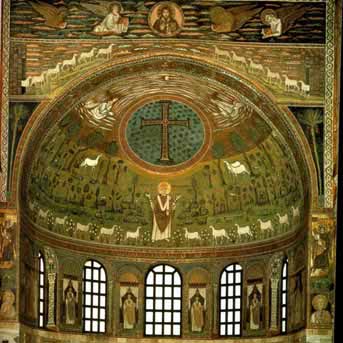Legacy and Importance
It is said history is written by the winners, and no better example of this statement is of the treatment of the Byzantine Empire in history - an empire resented by Western Europe, as shown by the sacking of Constantinople by the Fourth Crusade.
The 20th century has seen an increased interest by historians to understand the empire, and its impact on European civilization is only recently being recognised. Why should the West be able to perceive its continuity from Antiquity and thus its intrinsic meaning in the modern world - in so lurid a manner, only to deny this to the "Byzantines"?
Called with justification "The City," the rich and turbulent metropolis of Constantinople was to the early Middle Ages what Athens and Rome had been to classical times. Byzantine civilization itself constitutes a major world culture. Because of its unique position as the medieval continuation of the Roman State, it has tended to be dismissed by classicists and ignored by Western medievalists. And yet, the development and late history of Western European, Slavic and Islamic cultures are not comprehensible without taking it into consideration.
A study of medieval history requires a thorough understanding of the Byzantine world. In fact, the Middle Ages are often traditionally defined as beginning with the fall of Rome in 476 (and hence the Ancient Period), and ending with the fall of Constantinople in 1453.Byzantium was arguably the only stable state in Europe during the Middle Ages. Its expert military and diplomatic power ensured inadvertently that Western Europe remained safe from many of the more devastating invasions from eastern peoples, at a time when the Western Christian kingdoms might have had difficult containing it. Constantly under attack during its entire existence, the Byzantines shielded Western Europe from the Persians, Arabs, Seljuk Turks, and for a time, the Ottomans.
In commerce, Byzantium was one of the most important western terminals of the Silk Road. It was also the single most important commercial center of Europe for much, if not all, of the Medieval era.
It is said history is written by the winners, and no better example of this statement is of the treatment of the Byzantine Empire in history - an empire resented by Western Europe, as shown by the sacking of Constantinople by the Fourth Crusade.
The 20th century has seen an increased interest by historians to understand the empire, and its impact on European civilization is only recently being recognised. Why should the West be able to perceive its continuity from Antiquity and thus its intrinsic meaning in the modern world - in so lurid a manner, only to deny this to the "Byzantines"?
Called with justification "The City," the rich and turbulent metropolis of Constantinople was to the early Middle Ages what Athens and Rome had been to classical times. Byzantine civilization itself constitutes a major world culture. Because of its unique position as the medieval continuation of the Roman State, it has tended to be dismissed by classicists and ignored by Western medievalists. And yet, the development and late history of Western European, Slavic and Islamic cultures are not comprehensible without taking it into consideration.
A study of medieval history requires a thorough understanding of the Byzantine world. In fact, the Middle Ages are often traditionally defined as beginning with the fall of Rome in 476 (and hence the Ancient Period), and ending with the fall of Constantinople in 1453.Byzantium was arguably the only stable state in Europe during the Middle Ages. Its expert military and diplomatic power ensured inadvertently that Western Europe remained safe from many of the more devastating invasions from eastern peoples, at a time when the Western Christian kingdoms might have had difficult containing it. Constantly under attack during its entire existence, the Byzantines shielded Western Europe from the Persians, Arabs, Seljuk Turks, and for a time, the Ottomans.
In commerce, Byzantium was one of the most important western terminals of the Silk Road. It was also the single most important commercial center of Europe for much, if not all, of the Medieval era.





تعليق